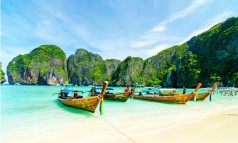



















Sunday, Sep 01, 2024 00:30 [IST]
Last Update: Saturday, Aug 31, 2024 18:55 [IST]
Window Seat
I went to
Koraput after many years. Located in the Eastern Ghats, Koraput is in the
southern part of Odisha, bordering Andhra Pradesh. A line of hills
marks its outer boundary to the east reaching a height of 5486 feet at Deomali,
the highest peak of Odisha, near Pottangi and 5316 feet at Sinkaram Gutta near
Araku on the Andhra Pradesh border.
The train
journey from Raygada to Koraput through deep forest and hills, tunnels and high
bridges was refreshing. I found many people, including senior citizens from
West Bengal coming to visit and spend 2-3 days in Deomali.
At one
point of time Koraput used to be known as one of the most backward districts of
Odisha. Along with Bolangir and Kalahandi they formed ‘KBK’ districts- one of
the most impoverished parts of India. Those days are over. Consistent effort by
the State and Union government, setting of institutions and industries
attracted investment and provided employment and business opportunities.
Improved connectivity facilitated vertical and horizontal movement.
But Koraput
town has lost its old world charm and serenity. The clean look has been
replaced with dirty and dusty sprawl of an unplanned district town. The town of
Gopinath Mohanty has changed; the mystique charm is gone.
Baripada
Indigenous Film Festival
Indigenous films are films made by, for, and about
indigenous and aboriginal peoples in various parts of the world. Among the
earliest known indigenous films are those made by Navajo people as part of an
experiment in indigenous image production conducted in the 1960s by US visual
anthropologists.
In India, post new millennium films are being made in
indigenous (mostly tribal) language in increasing numbers thanks to the ease
provided by the new technology for production and distribution of content.
For example Santhali language films now have its presence in
states of Odisha, Jharkhand, West Bengal, Assam and parts of Nepal (especially
Jhapa District and Morang District), where Santhals live.
An Increasing number of documentaries and short films are
also being made in different indigenous languages across India foregrounding
tribal issues and concerns.
Baripada Indigenous Film Festival has been showcasing such
initiatives for the past five years. Its sixth edition will be held in
mid-December in Baripada, Odisha. See their facebook page for details.
Incidentally, Baripada and Ranchi happen to be the hub of
Santhali film industry.
Charles
Correa
Charles
Mark Correa, one of the most celebrated architects of modern India, who built
iconic buildings like Sabarmati Ashram in Ahmedabad, Jawahar Kala Kendra,
Jaipur, Rajasthan and Ismaili Centre, Toronto, Canada- was born on 1 September
1930 in Secunderabad. He did his higher studies in Mumbai and obtained his
Master’s degree from MIT (Massachusetts Institute of Technology), USA. He
returned to India and started designing low cost, environmentally sustainable
buildings.
My son, who
teaches Architecture in a State University is a big fan of Correa and keeps on
talking about his open-courtyard style and use of traditional
methods and materials.
I have been
fortunate to visit many of Correa designed buildings, the latest being the
Bharat Bhavan in Bhopal. Located on the bank of the majestic Upper Lake,
Bharat Bhavan houses galleries for exhibition and indoor and outdoor
auditoriums. Theatre, musical programmes, literary discussions are held here
round the year. When I visited, an art exhibition by Swapan Tarafdar, an Indore
Art college trained award winning young artist and one Gond tribal art
exhibition were going on.
Correa was
also known for his sensitivity to the needs of the urban poor. He
was the Chief Architect for New Bombay (Navi Mumbai) from 1970–75, where he was
strongly involved in extensive urban planning of the new city. In
1984, he founded the Urban Design Research Institute in Bombay, dedicated
to the protection of the built environment and improvement of urban
communities. During the final four decades of his life, Correa has done
pioneering work in urban issues and low-cost shelter in the Third world.
He breathed his last on 16 June 2015.
Graffiti as protest art
Graffiti as protest art acts as an important tool to form
social consciousness, create networks, operate accessibly, and be
cost-effective. Social movements produce such works as the signs, banners,
posters, and other printed materials used to convey a particular cause or
message.
The civil rights movement in the US was probably the first
time Graffiti Art became a prominent form of social protest. It has long
been used in India as well, especially in Bengal.
Graffiti has been used extensively during the protest
against the heinous rape and murder of a Medical student at R G Kar Medical
College, Kolkata. The graffiti includes slogans, rhyming couplets and lines
from popular songs/poems, besides graphics.
Namak-wali
Chai
Any
historical city eventually will be divided into two parts- one old and the
other new, the old with narrow roads with winding by lanes, crowded bazars
interspersed with historical monuments; and the new with wider roads, swanky
markets and modern buildings. From Bhubaneswar to Bhopal- it is the same story.
But the best food and takeaways would always be available in the old part of
the city.
In Bhopal,
I was accompanied by Lal Bahadur Ojha, a young teacher of MCU. He said, we must
take the namak-wali chai. Called Sulemani chai, it is unique to Bhopal.
So we took
an auto, the ubiquitous public transport of Bhopal and went to Purani Bhopal to
a shop named Patel Chai. It is a small and dingy shop. We squeezed into narrow
wooden benches. The tea arrived.
Unlike the
tea of Ladakh, it is neither buttery nor salty. It tasted sweet- differently.
Lalbahadur asked, how is it? I replied, it is different.
- Yes,
they put salt and sugar to accentuate the taste of the sugar.
So it tastes different.
I realized
why people are so passionate about Bhopal. It has a different charm. Here even
the ‘namak-wali chai’ tastes sweet.
